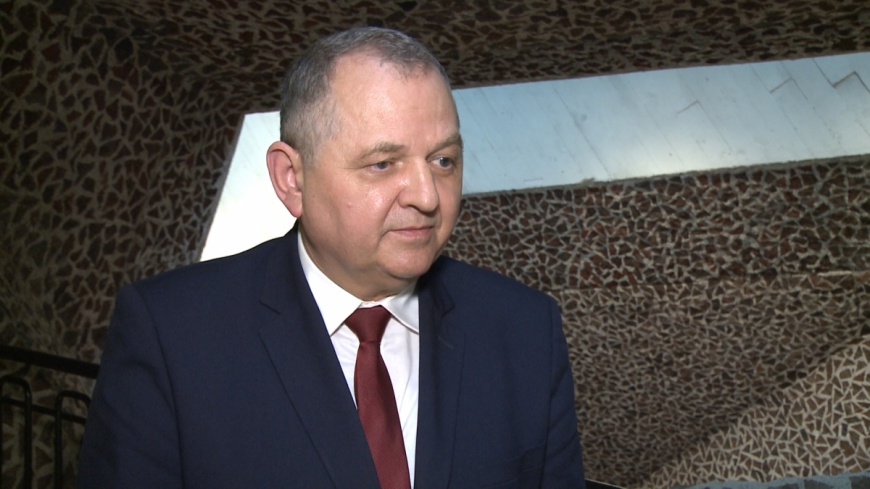| Says: | Ryszard Zarudzki, Deputy Minister of Agriculture and Rural Development Henryk Wronowski, President of the Management Board, Krajowa Spółka Cukrowa |
The Ministry of Agriculture; The Common Agricultural Policy is essential for the development of the agri-food sector at large. Direct subsidies for farmers must be equal
The Common Agricultural Policy is essential. It is key for profitability and determines how much Polish farmers and agri-food companies earn,” argues Henryk Wroniewski, President of the Management Board, Krajowa Spółka Cukrowa. Work is currently under way to formulate the Common Agricultural Policy beyond 2020. For Poland, the priority is to ensure equal direct subsidies. This is the only way to make sure that Polish farmers can stay competitive on the European market. In some cases, the current subsidies are three times lower than in Western Europe. This is significant as over the last decade direct subsidies made up almost half of what farmers earned.
“Already last year, the Polish government decided on Poland’s priorities in the Common Agricultural Policy beyond 2020. After a communication of the European Commission of 30 November 2017, we adopted a position that is shared by both our Ministry and the Government, so we’re primed to negotiate the Multiannual Financial Framework, or the EU budget, for the years 2021-2026,” Ryszard Zarudzki, Deputy Minister of Agriculture and Rural Development, told the Newseria Biznes news agency.
The Polish government postulates that the cohesion policy focus more on rural areas to ensure the equal development across the country. Currently, only two voivodeships (Podlaskie and Kujawsko-Pomorskie) are spending EU funds to pursue this objective.
“We must secure the first pillar – payments – and make sure to have in place the second pillar – a rural development programme. We must have robust market rules in place to guarantee certain levels of income for farmers and, most importantly, to level the playing field for Polish farmers to compete in Europe and implement market regulations in case of a crisis – this is essential. Farmers are interested in stability, predictability and sustainability of the work they put in every day,” Ryszard Zarudzki explained.
With respect to the CAP, Poland, like other Baltic states, prioritises equal direct subsidies. The CAP follows a new approach in which agricultural activity will have to be integrated with environmental protection. This approach will determine farmers’ revenues. Currently, about 30 percent of direct subsidies are allocated on greening, which involves maintaining green spaces and crop diversity.
“Engaging in agriculture in Poland is strongly intertwined with the Common Agricultural Policy. The CAP is relevant for businesses, agri-food producers and, above all, Polish farmers. So, its indirect impact on the agri-food industry is considerable. The Common Agricultural Policy is essential, primarily for economic reasons, as given the current price relations, it determines general profitability and the profits of Polish farmers and agri-food businesses,” observed Henryk Wronowski, President of the Management Board, Krajowa Spółka Cukrowa.
In the 2014-2020 financial perspective, Poland received about EUR 32 bn in CAP funds. In the upcoming perspective, the level of funding should not be lower, but what is of primary importance for Poland is to ensure equal direct subsidies for farmers through what is called convergence. CAP subsidies amount to about EUR 58 bn a year, but subsidy levels vary from country to country. In some cases, Polish farmers receive up to three times less than farmers in Western Europe.
Read also
- 2025-06-18: Dzięki e-commerce rośnie eksport polskich małych i średnich przedsiębiorców. Wartość ich sprzedaży na Amazon przekracza rocznie 5 mld zł
- 2025-04-11: Czeski ubezpieczyciel wchodzi na polski rynek. Oferował będzie na początek ubezpieczenia komunikacyjne
- 2025-01-14: Producenci drobiu obawiają się liberalizacji handlu z Mercosurem i Ukrainą. Ostrzegają przed zagrożeniem dla bezpieczeństwa żywnościowego w UE
- 2024-11-22: Rośnie rola pracowników w podejmowaniu decyzji zarządczych. Firmy chętniej korzystają z ekspertów zewnętrznych
- 2024-06-19: Europa idzie w kierunku ponownego wykorzystywania surowców. Prawo i fundusze unijne będą w kolejnych latach mocno wspierać ten proces
- 2024-02-13: Dostęp do nowoczesnych terapii onkologicznych się poprawia. Nadal jednak problemem są duże nierówności między regionami
- 2024-01-29: Dobre prognozy dla polskiej branży turystycznej na 2024 rok. Dużym problemem jest jednak brak pracowników
- 2023-11-28: Ryszard Kalisz: Przywrócenie praworządności jest możliwe w czasie jednej kadencji. Są już gotowe koncepcje i projekty
- 2023-11-16: Diagności laboratoryjni apelują o zmiany w przepisach regulujących wykonywanie zawodu. Ustawa ma raptem rok, ale jest w niej szereg nieścisłości
- 2023-06-26: Ryszard Petru: Polska jest gospodarczo słabsza i mniej przewidywalna. Osłabiają ją nacjonalizm, populizm i centralizacja
Trade

Polish consumers are more satisfied than Americans, with the customer satisfaction level being close to 80 percent
For six years the customer satisfaction index in Poland has grown by over 17 percentage points to nearly 78 percent, and it currently exceeds the customer satisfaction levels recorded in the USA and the United Kingdom. Service quality and its growing significance among businesses have had a tremendous impact on customer satisfaction. For the eleventh time the Customer Service Quality Star titles have been awarded to entrepreneurs recording the best results in this field.

